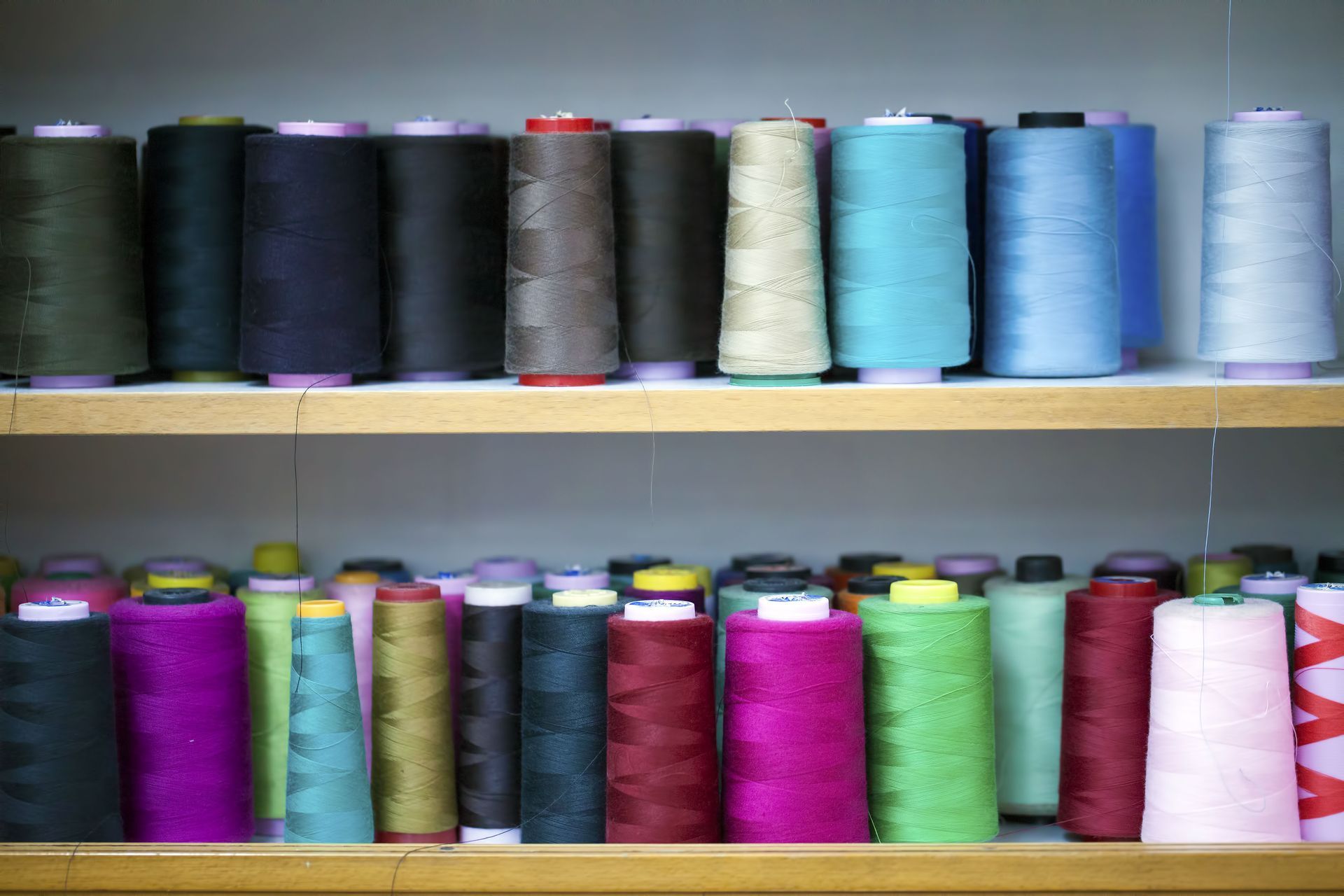The Benefits of Clothing Alteration Services
In today’s fashion-conscious world, clothing alterations have become increasingly popular. As consumers seek garments that reflect their personal style while offering comfort and a perfect fit, professional tailoring has emerged as an essential service. Clothing alterations are no longer reserved for formal wear alone—they have become a versatile solution for everyday outfits, special occasions, and even high-end designer pieces. According to Business Research Insights, the clothing alterations services market was valued at approximately $4.26 billion in 2024 and is projected to reach $6.92 billion by 2033. This growth highlights the increasing demand for customization and personalized garment care in an era where individuality and sustainability are highly valued.
Clothing alterations offer more than just aesthetic improvements—they provide practical benefits that enhance both the longevity of garments and the confidence of the wearer. As fashion evolves and personal body shapes change, the ability to adjust clothing to fit perfectly has never been more important. The following sections explore how clothing alteration services improve fit, the types of garments that can be altered, environmental advantages, cost-saving potential, and tips for choosing the right service provider.
How Do Clothing Alteration Services Improve Garment Fit?
One of the most obvious benefits of clothing alterations is the improved fit of garments. Many off-the-rack items are designed to fit a general size range, which may not suit every body type. Professional tailors and alteration specialists can adjust hems, seams, sleeves, waistlines, and other aspects of a garment to create a fit that flatters the individual wearer. A well-fitted piece not only looks polished but also feels comfortable throughout daily activities.
For example, a blazer that fits perfectly at the shoulders and waist can transform the entire appearance of an outfit, enhancing both posture and confidence. Similarly, pants that are tailored to the precise length prevent bunching at the ankles and allow for more fluid movement. By investing in clothing alterations, consumers can enjoy garments that feel custom-made without the higher price tag of bespoke fashion.
Improved fit also has a psychological impact. Wearing clothes that complement one’s body shape boosts self-esteem and can even influence how others perceive the wearer. In professional or social settings, the subtle difference between a garment that fits well and one that does not can be significant. Clothing alterations ensure that every item in your wardrobe contributes to a confident, stylish presence.
What Types of Clothing Can Be Altered?
Clothing alterations are versatile and applicable to a wide variety of garments. From casual wear like jeans, t-shirts, and jackets to formal attire including suits, dresses, and evening gowns, most clothing can be adjusted to achieve a better fit. Even specialty items, such as leather jackets or designer pieces, can often be tailored with the right expertise.
Casual garments benefit from adjustments that improve comfort and ease of movement. Shortening sleeves, tapering pants, or adjusting waistlines can make everyday outfits more flattering and practical. For formal wear, alterations are often essential to achieve the polished look required for weddings, professional events, or other special occasions. Even minor adjustments, such as taking in a dress at the side seams or hemming a skirt, can dramatically enhance the overall appearance.
Outerwear, including coats and jackets, can also be altered to improve fit and functionality. A well-fitted coat not only looks stylish but also provides better insulation and mobility. Similarly, athletic wear or performance garments can be tailored for comfort and support, ensuring that functionality is maintained without compromising style. Overall, clothing alterations offer solutions for nearly every type of wardrobe, making them a practical investment for all clothing categories.
Why Are Clothing Alterations Environmentally Friendly?
In addition to improving fit and appearance, clothing alterations contribute to environmentally responsible fashion practices. Altering existing garments reduces the need to purchase new clothing, which in turn helps minimize textile waste and the environmental footprint associated with manufacturing. The fashion industry is a major contributor to global waste, with millions of tons of discarded clothing ending up in landfills each year. By extending the life of garments through professional tailoring, consumers can make more sustainable choices while enjoying personalized fashion.
Clothing alterations also promote the concept of “slow fashion,” where quality and longevity are prioritized over rapid, trend-driven consumption. Instead of discarding pieces that no longer fit or have minor imperfections, consumers can invest in alterations that restore functionality and style. Even small adjustments, such as repairing seams or shortening sleeves, can prevent perfectly good garments from being discarded prematurely.
Sustainable fashion practices supported by clothing alterations not only benefit the environment but also encourage thoughtful consumption. When clothing is tailored to fit perfectly and maintained properly, it is more likely to be cherished and worn repeatedly. This reduces the frequency of unnecessary purchases and supports a more responsible approach to wardrobe management.
How Can Alteration Services Save Money in the Long Run?
Although clothing alterations may involve an upfront cost, they can save money over time by reducing the need to buy new garments frequently. Investing in alterations allows consumers to extend the life of high-quality pieces that may be expensive to replace. Instead of purchasing an entirely new wardrobe when sizes change or styles shift, altering existing clothing offers a cost-effective alternative.
For example, a well-made suit or designer dress can be worn for years if adjustments are made to accommodate body changes or personal style preferences. Similarly, casual wear that fits better after alterations is more likely to be worn regularly, reducing the temptation to replace items unnecessarily. Clothing alterations essentially function as an investment in a versatile and long-lasting wardrobe.
Moreover, tailoring can enhance the resale value of garments. High-quality pieces that are properly altered and well-maintained often fetch higher prices in secondhand markets. This can offset the cost of alterations and even contribute to overall wardrobe savings. In this way,
clothing alterations serve both practical and financial purposes, providing value that extends beyond aesthetics.
What Should You Look for in a Good Clothing Alteration Service?
Choosing a reliable and skilled clothing alteration service is essential to achieving the desired results. Not all tailors offer the same level of expertise, and the quality of alterations can vary significantly. When selecting a service provider, it is important to consider experience, customer reviews, and the range of services offered.
Experienced tailors possess the technical skills necessary to handle a variety of fabrics and garment types. They understand how different materials behave and can make precise adjustments without compromising the integrity of the clothing. Customer reviews offer insights into the reliability and professionalism of a service provider, highlighting past experiences and satisfaction levels. It is also helpful to inquire about the specific types of alterations offered, from simple hems and seam adjustments to complex tailoring for formal or specialty garments.
Communication is another key factor. A good clothing alteration service listens to the client’s needs and guides the most appropriate adjustments. This ensures that expectations are met and that the final result aligns with the desired fit and style. Additionally, transparency regarding pricing and turnaround time helps prevent misunderstandings and ensures a smooth experience.
Clothing alterations offer a range of benefits that extend beyond simple aesthetics. They improve fit, enhance comfort, and boost confidence while allowing garments to be worn longer and more sustainably. From casual outfits to formal attire, alterations make almost every type of clothing more versatile and practical. Environmentally, tailoring helps reduce waste and supports sustainable fashion practices. Financially, investing in alterations can save money by extending the lifespan of garments and increasing their resale value.
With the clothing alterations market projected to grow from $4.26 billion in 2024 to $6.92 billion by 2033, it is clear that more consumers are recognizing the value of professional tailoring. By selecting a skilled and trustworthy service provider, individuals can enjoy the full range of benefits that clothing alterations offer, maintaining a wardrobe that is both stylish and sustainable. Whether for fashion, function, or environmental responsibility, clothing alterations are a practical solution for anyone seeking to maximize the potential of their garments. If you have clothing that needs alterations, call the experts at Mint Cleaners today!




Share On: